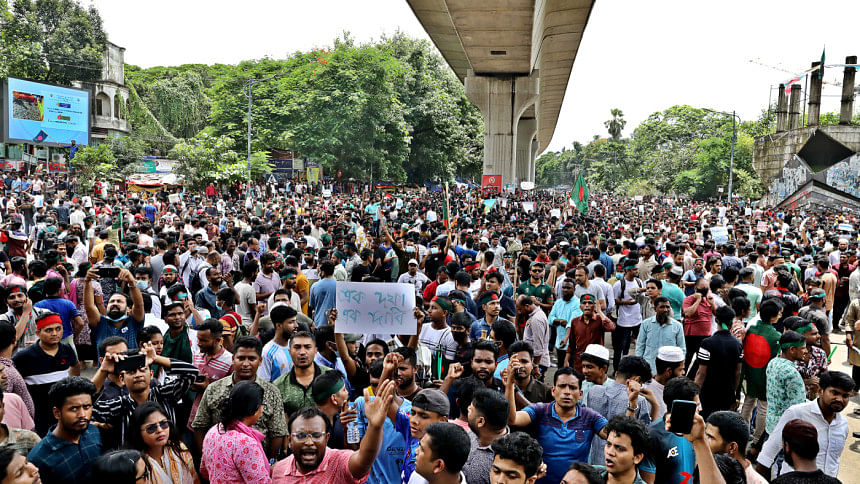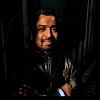August 4, 2024: The deadliest day of the uprising

August 4, 2024 marked the deadliest day of Bangladesh's student-led uprising, as the non-cooperation movement entered an explosive new phase.
What began with an eerie calm quickly unraveled into chaos, bloodshed, and widespread violence in at least twenty districts.
Protesters, police, and ruling party activists clashed across the country, leaving at least 93 people dead and over a thousand injured, many with bullet wounds. The day's toll pushed protest-related deaths since mid-July past 300.
In the morning, calm prevailed nationwide -- but it was short-lived.
Violence erupted after Awami League supporters took to the streets to suppress anti-government protests.
In Sirajganj, a mob attacked a police station and beat 13 police personnel to death. Five more died in nearby Raiganj upazila, making it the deadliest district that day.
Meanwhile, Dhaka turned into a battleground. Protesters and AL men clashed in Farmgate, Dhanmondi, Mirpur 10, Uttara, Shahbagh, and Gulistan. In Farmgate, police and AL men fired on a massive crowd advancing with sticks and traffic barriers. Protesters retaliated with brickbats.
In Dhanmondi, a fierce clash broke out near the AL office around 12:30pm. Gunshots and stun grenades shook the neighbourhood. At Shahbagh, tensions ran high as violence spilled into the Bangabandhu Sheikh Mujib Medical University premises. At least 24 vehicles were torched there.
In Mirpur-10, protesters were met by armed AL men and police, and the area echoed with gunfire. In Old Dhaka, clashes at the Chief Metropolitan Magistrate's Court saw over a hundred protesters and pro-BNP lawyers storm the premises, throwing bricks and damaging police vehicles.
Outside Dhaka, deadly clashes erupted in Laxmipur, Narsingdi, Feni, Rangpur, Sylhet, Bogura, Pabna, Munshiganj, Magura, Kishoreganj, Cumilla, Chattogram, Faridpur, and Khulna.
Protesters were beaten or shot; government offices and vehicles were torched. In Chattogram alone, 172 people with gunshot wounds were hospitalised. AL offices were vandalised in multiple districts.
Amid the bloodshed, students advanced their "March to Dhaka" programme to August 5. At 3:00pm, organiser Nahid Islam addressed a Shahbagh crowd, accusing the ruling party of trying to incite civil war. He urged citizens to form resistance committees and continue sit-ins until the government resigned.
Demonstrators later attempted to march with slain protesters' bodies, but were dispersed by police.
Meanwhile, then prime minister Sheikh Hasina called the protesters criminals, not students. Her office urged parents to pull students from the streets, citing "militant threats."
A High Court observation stated that law enforcers could use rubber bullets and tear gas, and only then live ammunition -- in cases of legal violations or riots. Live fire was otherwise forbidden.
At RAOWA Club, retired army officers demanded that troops be pulled from the streets and sent back to their barracks.
At Dhaka Reporters Unity, the University Teachers' Network proposed an interim government of teachers, lawyers, and civil society leaders --elected with student help -- to replace the Hasina government. The proposal was announced by Prof Anu Muhammad.
The BNP formally endorsed the student demand. Speaking at the party chairperson's Gulshan office, BNP Secretary General Mirza Fakhrul Islam Alamgir called on the government to resign, declaring national support for the one-point demand: Sheikh Hasina's resignation.
By evening, the government suspended 4G internet, blocked Facebook and WhatsApp, and extended the curfew indefinitely across Dhaka and all major administrative areas.

 For all latest news, follow The Daily Star's Google News channel.
For all latest news, follow The Daily Star's Google News channel. 



Comments